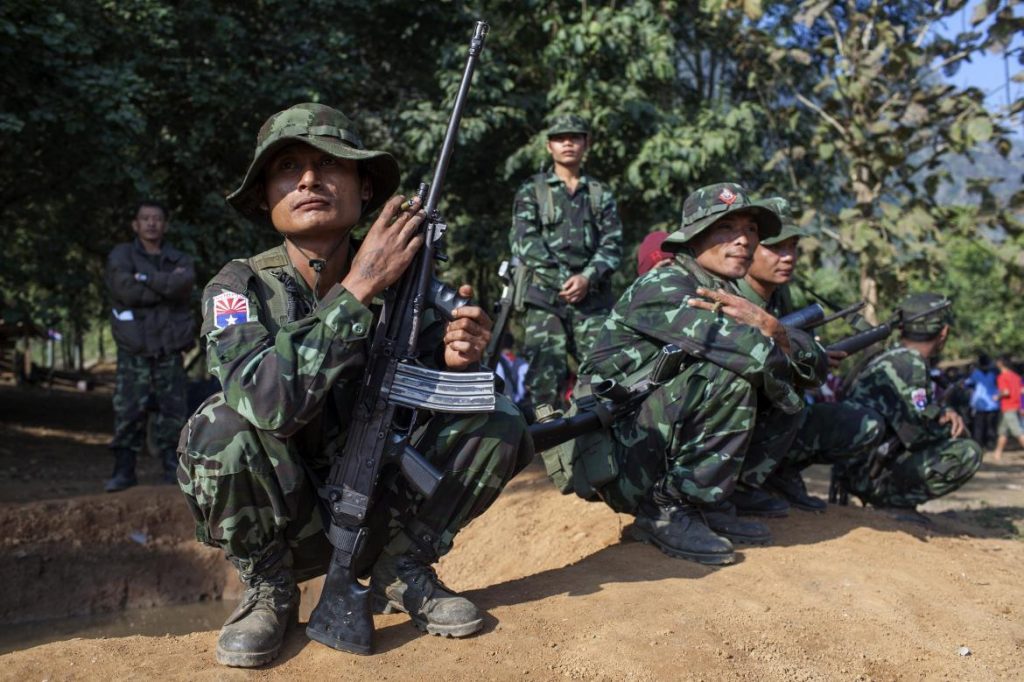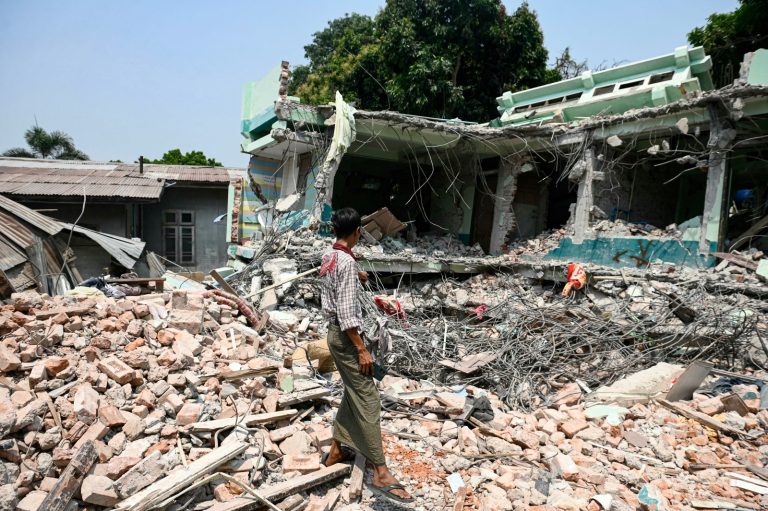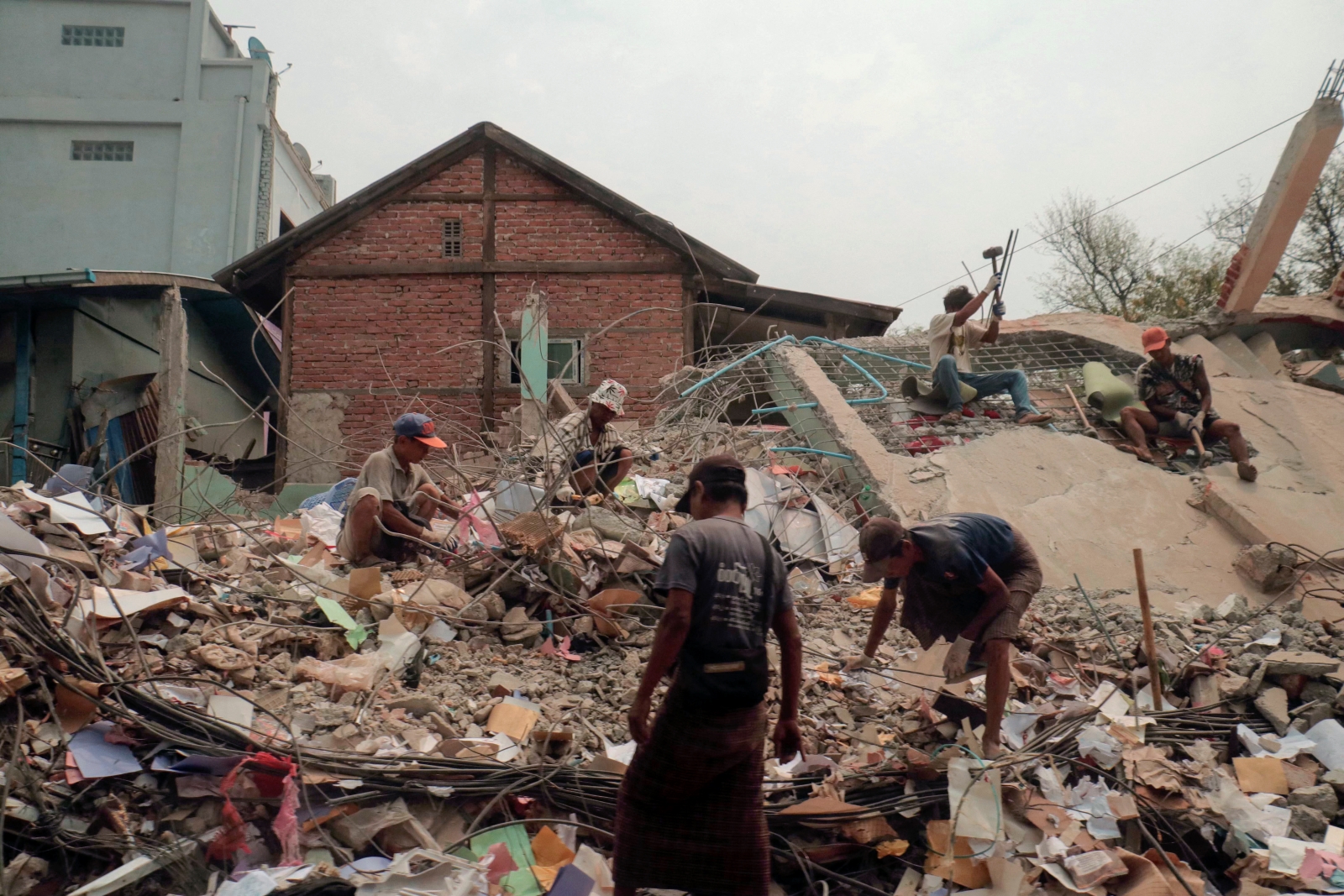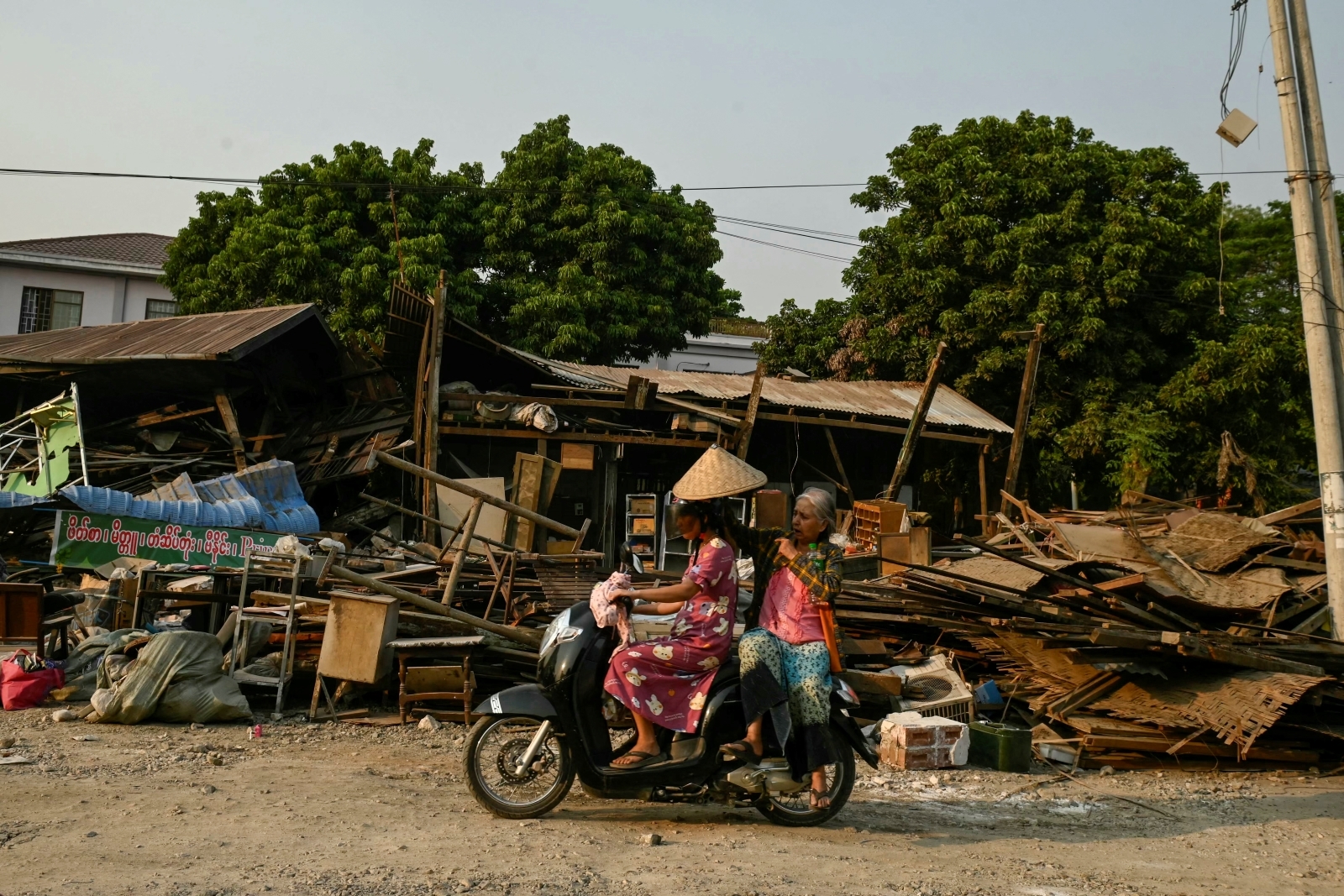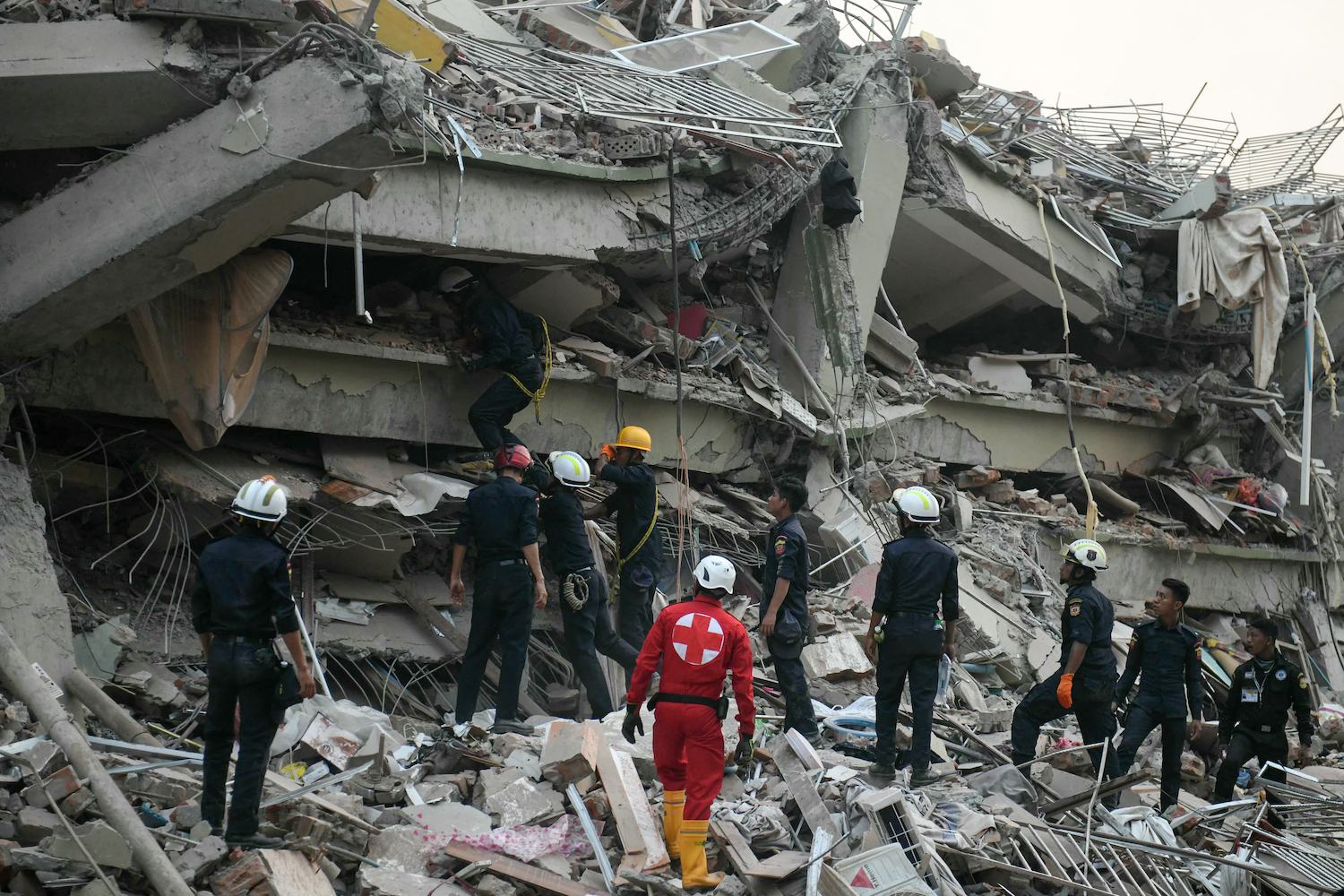Reporting on recent conflict in Kayin State that portrayed the Tatmadaw as violating the Nationwide Ceasefire Agreement has failed to recognise alternative perspectives and efforts to halt the fighting.
By MORGAN MICHAELS | FRONTIER
IN THE challenging realm of Myanmar analysis, a lack of information often leads to one-sided interpretations of conflict dynamics. But a recent episode in Kayin State underlines both the importance of considering alternative perspectives and that the conventional wisdom on the paucity of information available may not always hold true.
On March 4, clashes between the Karen National Liberation Army’s Brigade 5 and the Tatmadaw erupted following a disagreement over the Tatmadaw’s attempt to clear a dilapidated road between two of its bases in Hpapun Township, Kayin State. The KNLA is the military wing of the Karen National Union, one of 10 non-state armed groups that have signed the Nationwide Ceasefire Agreement.
Following the initial engagement, the Tatmadaw attempted to clear the immediate area and secure a perimeter along the road. In response, the KNLA Brigade 5 leadership and various Karen civil society groups condemned the road clearance, and accused the Tatmadaw of violating the NCA. The renewed conflict displaced at least 2,000 people and caused great alarm among activists and observers, and warnings of a possible return to war.
Many Karen also worried the road might facilitate an influx of Tatmadaw forces followed by resource extraction orchestrated by the government. Among many ethnic leaders and Myanmar analysts alike it’s commonly suspected that the Tatmadaw is using the cover of the NCA to slowly intrude upon ethnic lands.
Support more independent journalism like this. Sign up to be a Frontier member.
Commenting on the outbreak of fighting in Hpapun, many observers appeared to offer the same explanation as that provided by KNLA Brigade 5. Whether by willful neglect or inadvertent oversight, these efforts missed an opportunity to explore differing and important perspectives.
It is true that any attempt to gain a clear picture of the conflict in Myanmar is made difficult by the near complete absence of information released by the Tatmadaw. The Tatmadaw rarely speaks to journalists, and only occasionally releases information about its conflicts with ethnic armed groups. Even some of the most prominent Myanmar analysts do not have access to Tatmadaw sources.
While they share no blame for the black hole that is Tatmadaw media engagement, journalists and observers can benefit by first asking what information is in fact available, and how that information might inform analysis.
The Brigade 5 claimed the Tatmadaw violated the NCA and was therefore responsible for the outbreak of fighting in Hpapun. The Tatmadaw’s apparent violation of the ceasefire was widely reported in the media and presented by some outside observers as evidence of Tatmadaw disingenuity toward the NCA.
But in making this claim, analysts should also explain how the Tatmadaw might have violated the NCA, because ceasefire violations can be difficult to assess.
The NCA prohibits troop movements for territorial control and stipulates that signatories need to consult with the other side when undertaking military-related activities. The NCA does not specifically require agreement between two parties for road construction, but a signatory might reasonably infer that the NCA implies a need for such agreement based on these clauses.
On the issue of consultation, the Tatmadaw informed the KNLA Brigade 5 of its plans to clear and upgrade the old road, although the Brigade 5 did not consent. The Tatmadaw claimed it was simply repairing an existing road, rather than constructing a new one.
Once fighting broke out, the Tatmadaw brought in reinforcements to secure a perimeter along the road. While this might constitute a violation of the NCA, it’s not surprising that the Tatmadaw would not inform its opponent of its tactical effort to protect its own soldiers during combat.
Importantly, an understanding of how and when a ceasefire violation took place in Hpapun raises the possibility of another explanation for the clashes. Within the vague and ambiguous parameters of ceasefires agreements, misunderstandings can – and often do – escalate into larger episodes.
Yet most analysts did not seem to consider a misunderstanding as the possible cause of the fighting, and appeared to overlook the existence of other important pieces of evidence.
Such evidence began with a public statement released on April 11 in which the Tatmadaw seemed to play down the clashes by directly attributing them to a “misunderstanding”. The Tatmadaw also appeared to avoid placing blame on the KNLA and from the start claimed a willingness to defuse tensions.
That willingness was first demonstrated when the Tatmadaw and KNU scheduled a two-day meeting to discuss the clashes in late March. The Tatmadaw sent Lieutenant-General Min Naung – who, as head of the Bureau of Special Operations 4, is responsible for three regional commands – to attend the meeting. The presence of such a high-ranking official indicated the importance of the issue to the Tatmadaw’s central command.
Nonetheless, Brigade 5 and commentators alike were quick to point out that the Tatmadaw cancelled the talks after learning that the Brigade 5 commander, General Saw Mu Heh, would not attend. The Tatmadaw stated that a resolution would require Saw Mu Heh’s attendance.
Lacking a meeting with Saw Mu Heh, Tatmadaw Commander-in-Chief Senior General Min Aung Hlaing eventually held talks with KNU chairman Saw Mutu Say Poe on May 17. The meeting de-escalated tensions, with the Tatmadaw agreeing to postpone its road clearance and withdraw its reinforcements.
Sources say that neither the Joint Ceasefire Monitoring Committee nor top Tatmadaw command received any report of clashes in Hpapun following the meeting on May 17. Contrary to these sources, however, several posts to Facebook pages run by individuals close to the Brigade 5 alleged that fighting had continued after the meeting. On May 22, a Brigade 5 captain even told the 7Day Daily that a clash occurred on May 19. The discrepancy indicated that some elements in the KNLA did not share the same view as to whether the meeting had helped to de-escalate tensions.
At this juncture, one might have begun to consider the possibility of a difference in opinion among some members of the KNU/KNLA over the cause of the clashes. A careful look would have validated this suspicion.
In an interview with Mizzima on April 28, Padoh Saw Thamain Htun, a member of the KNU central executive committee, highlighted the complexity of the demarcation in Hpapun by comparing the area to a chessboard. The Tatmadaw periodically reshuffles troops in conflict zones and incoming officers are not properly briefed on the informal arrangements between local Tatmadaw and KNLA units.
The new Tatmadaw commanders usually conduct perimeter patrols around their bases in accordance with security protocols, and this practice can trigger clashes with the KNLA. Once the new Tatmadaw unit familiarises itself with the local environment, the two sides are usually able to avoid clashes, Saw Thamain Htun explained.
Adding further evidence to this notion is the fact that the Brigade 5 issued its own statements critical of the Tatmadaw during the early stages of the conflict. Normally, the KNU central command would be responsible for releasing statements of such importance.
On May 10, however, the Office of the Supreme Headquarters of the KNU did release a statement accusing the Tatmadaw of increasing troop deployments, disregarding the NCA, and undermining trust. Yet the release also included several conciliatory statements and a more measured tone than the independent Brigade 5 releases.
Of the six main points in the release, four either directly or indirectly called for rapprochement. These included an appeal to restore trust through peaceful dialogue, a call for an immediate meeting, and a firm reiteration of the KNU’s commitment to the NCA and a peaceful resolution of the historical conflict.
Together, these details may have led analysts to quite a different conclusion than reached by most. Instead, many simply began to speculate of an impending return to open conflict with the entire KNU.
That tendency to speculate is likely driven by the generally accepted belief that ample evidence is often unavailable in Myanmar. But in the case of Hpapun, the Tatmadaw did in fact offer some public comment, and varying perspectives from within the KNLA itself were offered to the media.
The bottom line is that failing to consider differing perspectives can lead to inaccurate portrayals of the conflict. This is not helpful at best, and at worst serves to stoke the embers of a decades-old war. If the Brigade 5’s explanation was indeed an accurate representation of events in Hpapun, then observers should still have evaluated alternative explanations before making such an assertion.
Moreover, those eager to cite ceasefire violations should demonstrate an equal willingness to point out efforts toward peaceful resolution. The fact is that the ceasefire among signatories remains robust, and available channels and mechanisms for dispute resolution are open and being used.


